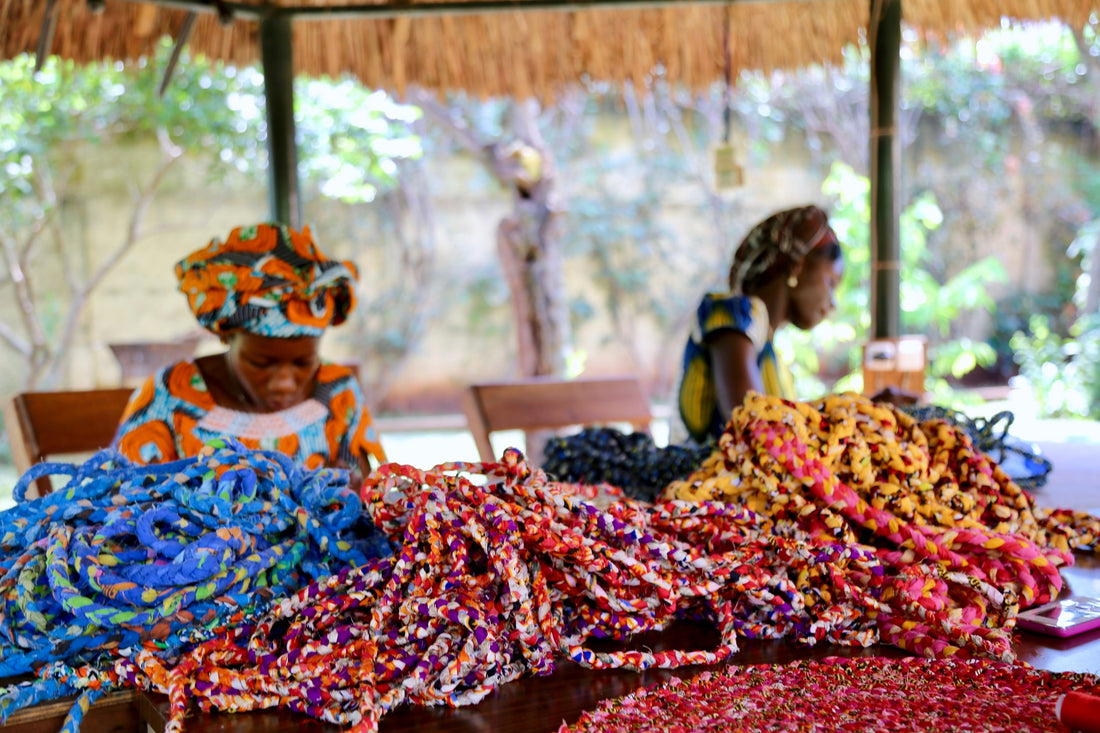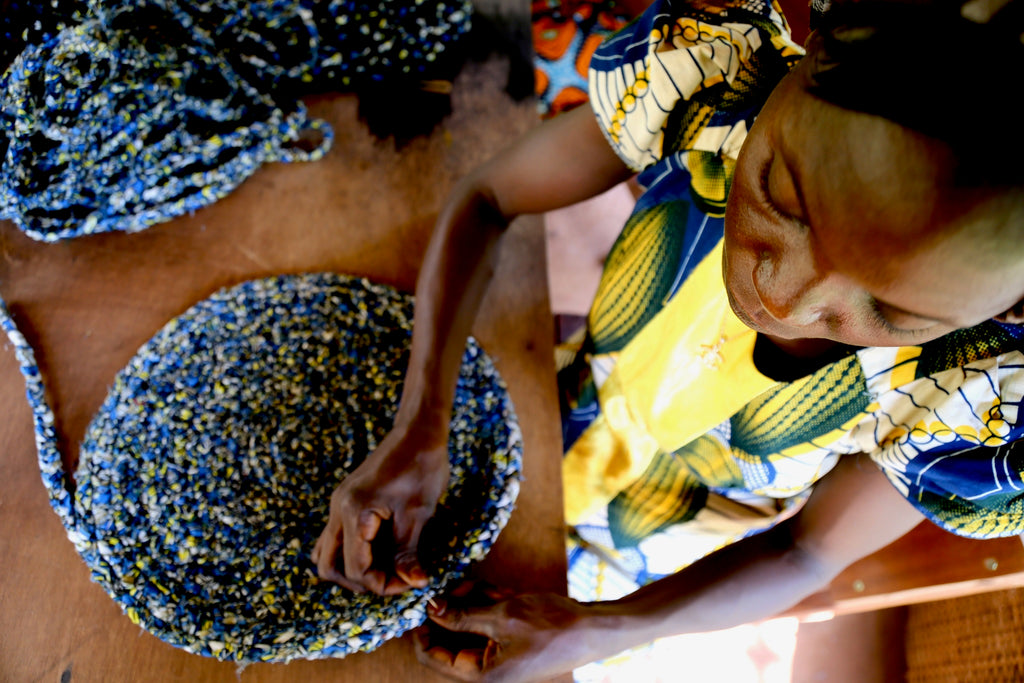
How do you start anything at all?
Share
This week Charlotte tells the story of Ndara’s first rug and how Ndara started.
Ndara’s story starts with a burst of color on a roadside in Uganda.
In 2017, I was driving across Uganda on my way back home to the Central African Republic. I was weary. Life in CAR since the violent civil unrest started in 2013 was exhausting, but as everyone living there I carried on with my work despite the fear and constant disruptions due to violence. Yet, I was growing increasingly angry and frustrated by the international media’s negative portrayal of CAR in the headlines. I knew first hand that the violence they described was true, but every day I also saw grace, beauty, incredible strength and resilience in the Central Africans that I lived and worked with. 
On that dusty road in Uganda, as I chewed on my frustration, I caught color out of the corner of my eye. The sides of the road seemed edged with big, brightly colored flags. In fact, they were not flags. Residents had hung up hand-braided grass mats on makeshift poles to sell to passing cars. As I drove by, I thought to myself, “These brightly colored mats are just like my experience in Uganda!” I’d seen a bustling country with a population whose big hearts and equally big smiles were everywhere: in markets, offices, around the dinner table, and on the street. Although Uganda had its share of problems, what stood out to me was how brightly it shone.
I carried a strong longing to tell another story from the Central African Republic. I wanted to show the world the radiance of the Central African Republic. I wanted to remind everyone, including Central Africans, that there is beauty, resilience and hope in CAR.
I believed that the story I was going to tell of the Central African Republic had to involve the most vulnerable and also the most brilliant: the women. Very few Central African women get the chance to go to school, so whatever it was that we were going to produce could not require literacy. The Central African Republic’s landlocked location, poor roads, lack of manufacturing, ongoing violence and instability put additional limits on what products were possible.
Like Ugandans, Central Africans also had a tradition of making grass mats, but it was disappearing. Rebels hiding in rural areas made it unsafe to harvest the grass. I had to come up with something else. 
On that road side in Uganda the idea of rugs made out of fabric was born.
Fabric, because it was readily available to the Central Africans.
Fabric, because any type of fabric available could be turned into a rug.
Fabric, because any artisan could learn how to braid and crochet.
Fabric, because it didn’t require the artisans to have access to tools or commodities.
Fabric, because it didn’t require the artisans to come to a workshop.
Fabric, because artisans could carry it with them if they had to flee violence.
I made a rug in my spare time. I braided during the hours and days when we could not move because of fighting in the city. During lunch breaks and at night while waiting for the electricity that regularly blacked out to come back, I worked my way to a finished rug. I shared my idea with some trusted Central African friends. By word of mouth we gathered a group of women. One morning in May 2017, sitting under a garden shack on small stools around a wooden table, we started to learn how to make rugs together.
In the following weeks and months we made several rugs. The women got to know each other. Our technique improved and we got bolder trying different color combinations, types of fabrics, sizes and shapes of rugs.
The idea grew despite the violence.
For much of that first year as violence broke out and persisted in different neighborhoods, our team worked separately in different constellations. When a neighborhood was locked down fighting, another one would be calm. Sometimes the violence kept a neighborhood closed off for several weeks. When that happened we found ways to smuggle fabric into the displacement camps where artisans were living, so they could continue to work.
As our sales grew, we needed something to do with the leftover fabric from our rug production. We discovered we could use the same braiding technique to make baskets. Then we tried sewing a stuffed elephant, a giraffe and a pangolin. Each product had to be made by hand, using only materials artisans could access in local markets. 
The Ndara artisans had never made a rug, nor an elephant or a giraffe before they joined together to try it out for the first time. When I first showed them the rug to produce, they looked at each other with open hesitation. Eventually, one of them said “e tara e ba”. In the local language sango this means “lets try and see”.
Until this day, whenever we are developing a new product or faced with a challenging project, someone on the team will say e tara e ba.
Let’s try and see.
These four words embody not only the spirit of the Ndara artisans, but also the population of the Central African Republic. Despite challenges and against all odds, they keep trying.
Remember this in your own journey. The tricky part of starting anything is always the starting. You’ll never start if you don’t “tara mo ba”.
